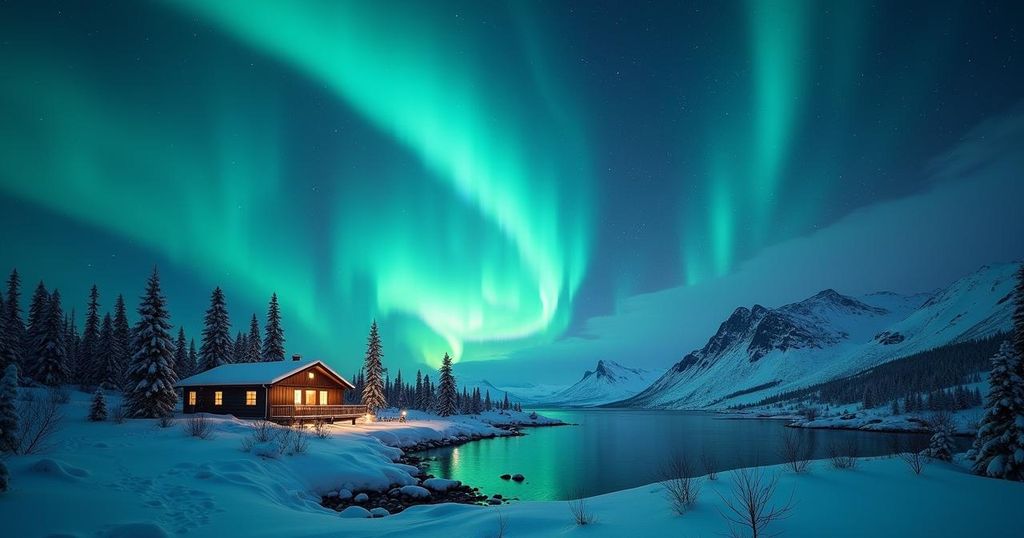Extraordinary Auroras Observed Across the Globe Due to Severe Solar Storm

A severe solar storm resulted in extraordinary auroras visible far beyond typical geographic limits, including major cities such as New York and Washington, D.C. This phenomenon, caused by a coronal mass ejection, allowed for sighting of the northern lights in unusual southern locales, highlighting the ongoing peak of the solar cycle.
A severe solar storm led to the spectacular display of auroras on Thursday night, painting the sky with vibrant hues of purple, red, and green in locations that are typically not graced by such phenomena. The northern lights, also known as aurora borealis, extended unusually far south, being observed in major cities including New York and Washington, D.C., and even reaching as far as Texas. This event marks the second significant geomagnetic storm experienced this year; the first had occurred on May 10 and 11, rated a remarkable “5 out of 5” or “extreme” for its intensity. Both the northern and southern lights were visible in regions spanning from Australia to parts of Europe, North and South America, and southern Africa. The geomagnetic storm was instigated by a coronal mass ejection from the sun, which bombarded Earth with solar particles at nearly 1.5 million miles per hour, temporarily disrupting the planet’s magnetic shield. This interaction facilitated the excitation of nitrogen and oxygen molecules in the upper atmosphere, resulting in the vibrant displays of light typical of auroras, with red hues manifesting more prominently in lower latitudes due to their higher altitude visibility. The auroras first illuminated the skies over Europe, captivating observers in London and extending to southern France. Many enthusiasts were initially concerned that the light display might diminish before sunset in the United States, yet it persisted and was visibly enjoyed across the country. For instance, in the D.C. area, observers were able to see the lights with the naked eye between 7:10 and 7:25 PM, continuing to delight those with more sensitive equipment throughout the evening. These extraordinary geomagnetic storms coincide with the peak of the solar cycle, which occurs approximately every 11 years, suggesting that several more opportunities for witnessing northern lights lie ahead. Dr. Bob Leamon, a solar physicist at the University of Maryland Baltimore County and NASA, noted, “In the next three or four years, we should see some fine displays of aurora; it is like a whole generation of people discovering something for the first time.”
Auroras are natural light displays predominantly seen in high-latitude regions near the Arctic and Antarctic. The phenomenon occurs when charged particles emitted by the sun collide with Earth’s magnetic field and atmosphere, causing dramatic displays of colorful light. Geomagnetic storms, which enhance these conditions, can occur due to coronal mass ejections—massive bursts of solar wind and magnetic fields rising above the solar corona or being released into space. These events are closely monitored by scientists, especially during the peak phases of the solar cycle when the frequency and intensity of such storms increase markedly. The current solar cycle is expected to provide numerous opportunities for auroral displays over the coming years.
In summary, the recent severe solar storm has allowed for an exceptional viewing of auroras in locations typically remote from such spectacles, significantly enhancing public interest and appreciation for this natural phenomenon. As the solar cycle progresses, more opportunities for similar experiences can be anticipated, marking a remarkable time for aurora enthusiasts.
Original Source: www.washingtonpost.com







